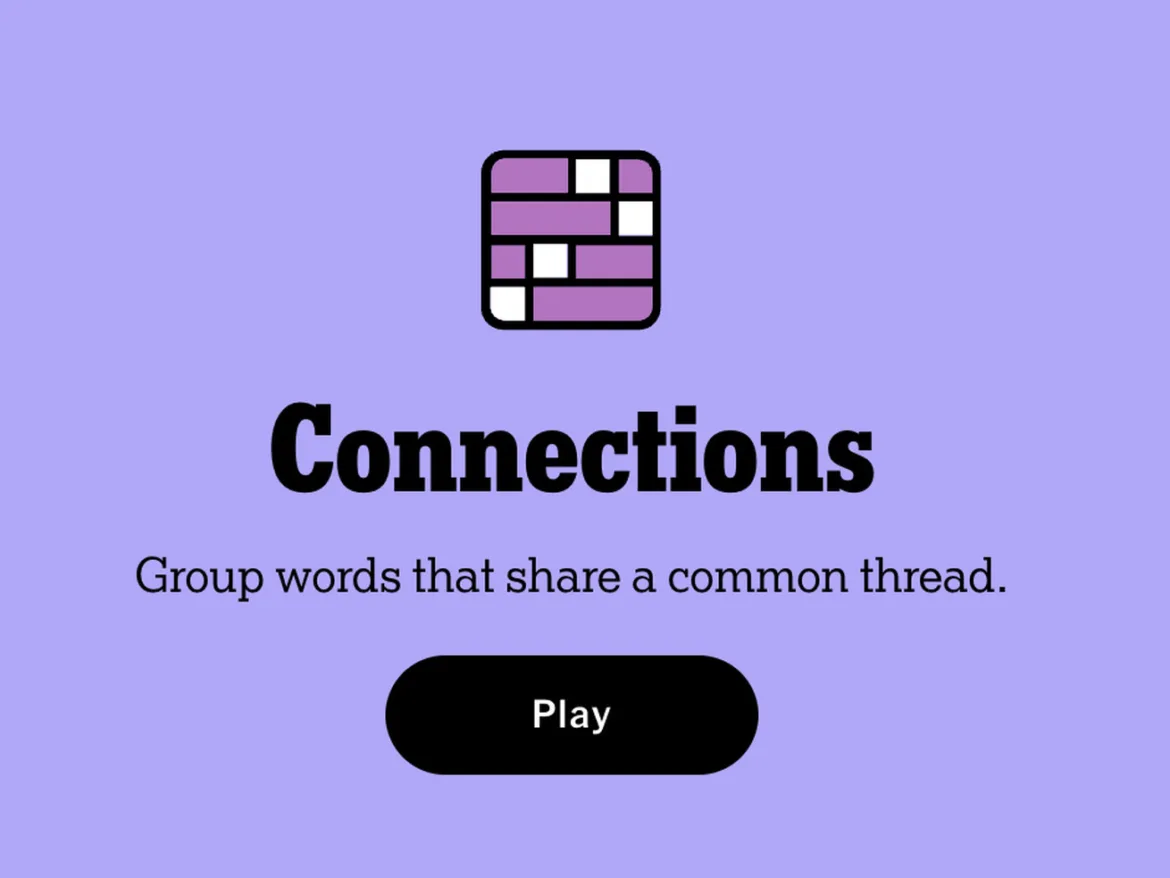Why a really great word game makes you feel smart, and also stupid.
What do the words “loo,” “condo,” “haw,” “hero” have in common? Unless you’re extremely into ornithology, it’s impressive if you were able to pick out the fact that if you added another letter to each of them, you’d spell the name of a bird. But if you’re a regular player of the New York Times game Connections, these four words have another significance: They make up one of the puzzle’s most notoriously tricky categories of all time.
Connections — an often frustrating but integral addition to a morning routine that might also include the Times’s daily crossword, Wordle, and Spelling Bee, or offshoots like the geography quiz Worldle and the GDP guesser Tradle — debuted last summer. Over the past nine months, it’s become the second-most played game at the Times, after Wordle, but it’s captured social media in a way that a simple five-letter word-of-the-day puzzle never could.
Connections is played like so: There is a four-by-four grid, and each box has a word in it. Your job is to group them into sets of four that make sense on levels that go from easy (say, synonyms or simply defined categories) to difficult (the bird one). When submitted, the easiest group will show up in yellow, the second-easiest in green, the second-hardest in blue, and the hardest in purple.
You can see how this might make people feel angry or, as one woman posted on TikTok, like she’s “immediately ready to fight” the game’s editor. That’s because Connections, even more so than crosswords, whose difficulty ratings are usually made clear from the outset, or Wordle, which relies heavily on luck, has the unique ability to make people feel either really, really smart or really, really stupid.
In a post titled “Why NYT’s Connections makes you feel bad,” game designer Raph Koster suggests Connections is “fundamentally elitist” because it requires players to have a broad education to find possible categories, and then punishes them for making guesses (players have only four tries before they fail the game). Some puzzles may be easier for certain folks — in order to know that “emerald,” “radiant,” “princess,” and “baguette” go together, you’ve got to have some knowledge of jewelry — and be extra difficult for those frustrated by potential overlap.
One recent puzzle included five answers that could work for the yellow (easiest) category, “seen at a sports stadium”: “astroturf,” “jumbotron,” “scoreboard,” “skybox,” and “kisscam.” Only the last one works for the purple (hardest) one, which was “starting with rock bands.” But there’s no way to tell whether a puzzle will be easy or hard until you’re playing it — thereby leading to the kind of near-conspiratorial thinking and Connections shaming on Reddit, Twitter, and TikTok. Complaining on Twitter about how hard that day’s Connections was is a risk in itself, and it more often than not ends with other people smugly commenting how “maybe word games aren’t for you” and posting memes that tell the poster to “take your sensitive ass back to Wordle!” They do have a point, however: The point of doing puzzles is to feel puzzled.
https://t.co/Sn2IpGORCG pic.twitter.com/Gb6CrQh94a
— zou bisou bisou where are you (@lilgrapefruits) February 27, 2024
According to Everdeen Mason, the editorial director of the Times’s Games section, these theories about Connections suddenly “getting harder” based on social media discourse are both hilarious and wrong — mostly. “We see everything, and we think pretty much all of it is funny,” she says of the people livestreaming their games and teasing each other over their results. “Connections in particular has felt really special, in part because of TikTok. I don’t know that any of our other games have really taken off in the same way. The game itself is pretty witty, and people can feel that and want to riff on it. It just makes it really memeable.”
The idea that the Connections editor, Wyna Liu, changes the difficulty in response to social chatter is untrue — games are programmed about a month in advance — with the exception of one period last October, before the Connections team started using official testers. Testers, who are paid and selected by Games staff, are used for all Times games to help look out for potentially incorrect or offensive puzzles, or grids where there could be multiple correct solves. “There were a couple of weeks where the solve rates were really low, and we were like, ‘We need to do something about this.’”
“It’s pretty much always the purple category that people are crankiest about,” Mason says. She points to the bird category and another purple set in February made of words beginning with instruments (“bassinet,” “cellophane,” “harpoon,” “organism”) as particularly frustrating for solvers. Of course, the frustration is part of the fun, and it’s why Connections was an immediate hit from its 90-day beta release last summer. Its full release, however, caused a small controversy because of its similarities to the British quiz show Only Connect, which also asks contestants to group a grid of 16 words into four sets of four. The game’s host, Victoria Coren, responded to the launch of Connections on Twitter, asking, “Do you know this has been a TV show in the UK since 2008?! It’s so similar I guess you must do?” The Times has denied copying the format.
Connections is also, crucially, much easier to solve than Only Connect’s grids, and audiences got obsessed quickly. It’s a similar story to Wordle, which debuted in 2021 and went viral in 2022, its characteristic colored block emojis making for the perfect shareable signature. More than that, Wordle avoids a common problem with games — playing too much too quickly and burning out — by only releasing a single game per day, which is also the model Connections and Spelling Bee use. None of these games has the power to take over your whole life in the way that, say, a super engrossing new video game might. And even though you’re technically only in competition with yourself, they’re fundamentally social games: Grids and scores are easily shareable online and make for solid conversation starters with pretty much anyone.
Liu has responded to the conversations on TikTok by posting her tips on how to play. Most importantly, she says, don’t guess unless you’re pretty sure you have a category. Second, look for words that don’t belong anywhere else. Last, think flexibly — “my job here is to trick you,” she says.
Games have been a hugely successful bet for the Times. The company told Axios that its puzzles, which were played more than 8 billion times in 2023 (including 2.3 billion Connections successes), have contributed to subscriber growth in a tough media market. Up next: a word search called Strands that’s currently in beta mode. Judging from the discourse it’s already sparked online, it seems to be yet another puzzle for solvers to argue about in comments sections and Reddit threads. In other words, a hit.
Though the New York Times debuted and then shuttered the math game Digits last year, something about word games seems to stick. “It’s our main medium of communication,” Mason says. “They make people feel engaged and intelligent, but they’re also accessible. You can take something away: a new vocab word, a new perspective, new connections between things.” Personally, I’ll never look at the word “kisscam” in the same way again.



